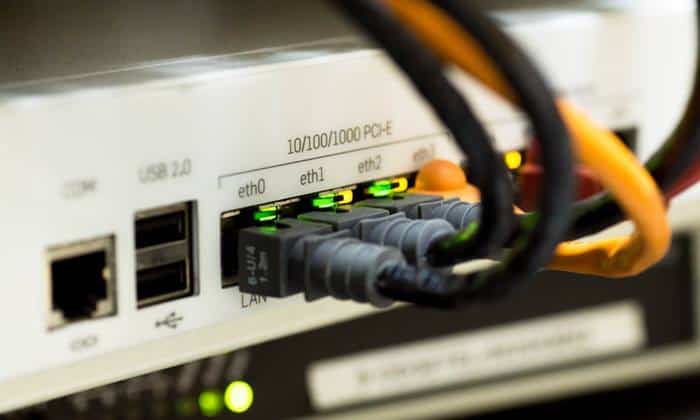Universal Plug and Play (UPnP) is a protocol that enables networked devices to automatically identify and establish two-way communication with one another.
Users should be aware of UPnP’s restrictions despite its many advantages.
In this piece, we’ll take a look at the pros and cons of UPnP to help you decide if it’s the best option for your network.
Advantages of UPnP:
One of the greatest benefits of UPnP is that it is simple to implement. Using UPnP does not necessitate any prior knowledge of networking.
Connect everything to your network, and they will immediately begin to find and talk to one another.
With UPnP, it’s simple to connect devices from a variety of manufacturers and operating systems together on a single network.
This allows you to connect and manage a wide variety of devices from many manufacturers with just one app.
Quickly establishing a connection between devices and networks is unnecessary with UPnP, saving you time.
Challenges inherent with UPnP:
Lack of control: While UPnP’s ease of use is a major selling point, it also means you may have less say over how your network is set up and used.
An increased level of administrative authority over your network and its associated devices may appeal to you if you are an experienced user.
Home Automation and UPnP: Connecting Devices for Smooth Control
For good reason, home automation is becoming more common.
Home automation can help you save time, energy, and money by enabling you to control your home’s lighting, thermostat, security, and other systems from a single app.
Home automation is made feasible by a number of technologies, including UPnP, or Universal Plug and Play.
In this article, we’ll look at how UPnP may be used to connect various devices and provide a fluid experience for home automation.
Examples of devices that can be connected using UPnP
UPnP makes it simple to connect and control various devices from a single app since it enables devices on your network to discover and communicate with one another.
To regulate the temperature from your smartphone or tablet, for instance, you can use UPnP to link your smart thermostat to your home network.
Your smart lights can also be connected using UPnP, giving you the ability to control their brightness, turn them on and off, and establish timers and schedules.
Simplifying Home Automation with UPnP
The simplicity of UPnP makes it one of the best options for home automation.
You don’t need to be a networking or programming specialist to set up and use UPnP for home automation.
Instead, you may just connect your gadgets to your network and control them with the manufacturer’s app or a different app.
The flexibility of UPnP for Home Automation
The adaptability of UPnP for home automation is another benefit.
As many different manufacturers support UPnP, you may connect and manage a large variety of devices from several suppliers using a single software.
Because of this, designing a personalized home automation system that suits your unique requirements and preferences is simple.
Moreover, UPnP offers a trustworthy and safe method of managing your devices.
You may set up security measures and access controls using UPnP to make sure your devices are guarded against unauthorized access.
This is crucial if your home’s security systems or other critical gadgets are controlled via UPnP.
Security Features of UPnP for Home Automation
UPnP is a great solution for connecting various devices and achieving seamless home automation.
You may connect and manage a wide variety of devices from various suppliers using UPnP, making it simple to adjust your home automation system to suit your unique requirements.
UPnP is a great option for anyone wishing to build a smart home that is convenient and secure because of its simplicity, adaptability, and security features.
Common UPnP Problems and How to Solve Them
Universal Plug and Play (UPnP) is a protocol that facilitates communication between networked devices.
Despite UPnP’s user-friendliness, problems may arise and require attention. This article will discuss frequent UPnP problems and their solutions.
Devices not appearing
One of the most prevalent UPnP problems is that devices don’t show up when they should.
A number of factors, such as improper network configuration or incompatibility between devices, might cause this.
Rebooting your gadgets, double-checking your network settings, and verifying for UPnP compatibility should get rid of the problem.
Causes of poor transfer speeds (slow connections, malfunctioning hardware)
Poor transfer speeds are another typical UPnP issue, making it difficult to transfer files or stream video.
Inconveniences like this might be brought on by either slow connections or malfunctioning hardware.
Try upgrading your router, using cable connections instead of wireless, or decreasing the number of devices on your network to see if it helps.
Authentication errors
Errors in authentication may be caused by improper login credentials or network configuration issues while attempting to connect to UPnP-enabled devices.
Try resetting your login information, double-checking your device settings, and double-checking the configuration of your network to see if any of them help.
Problems with device compatibility:
UPnP might not work properly with some gadgets or operating systems.
Check the device’s documentation to see if it supports UPnP, and make sure all your gadgets are running the most recent versions of their respective firmware and software if you’re having compatibility problems.
If your router does not have UPnP enabled, you will not be able to utilize it to manage your connected devices.
The problem can be resolved by accessing the router’s configuration page and activating UPnP there.
Overall, UPnP is a helpful technology that streamlines network device setup and management.
Yet, UPnP isn’t immune to problems, so it’s important to know how to troubleshoot.
You can keep your network running smoothly and your devices connected and under control, if you know what causes typical UPnP problems and how to resolve them.
Learn more about Home Network Security
